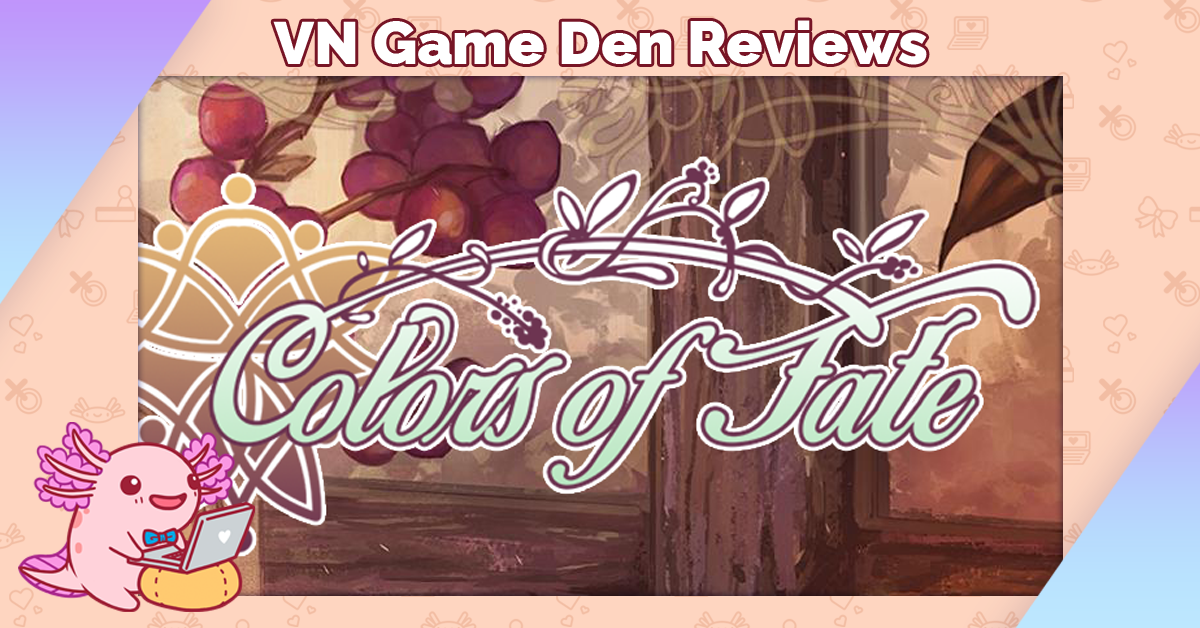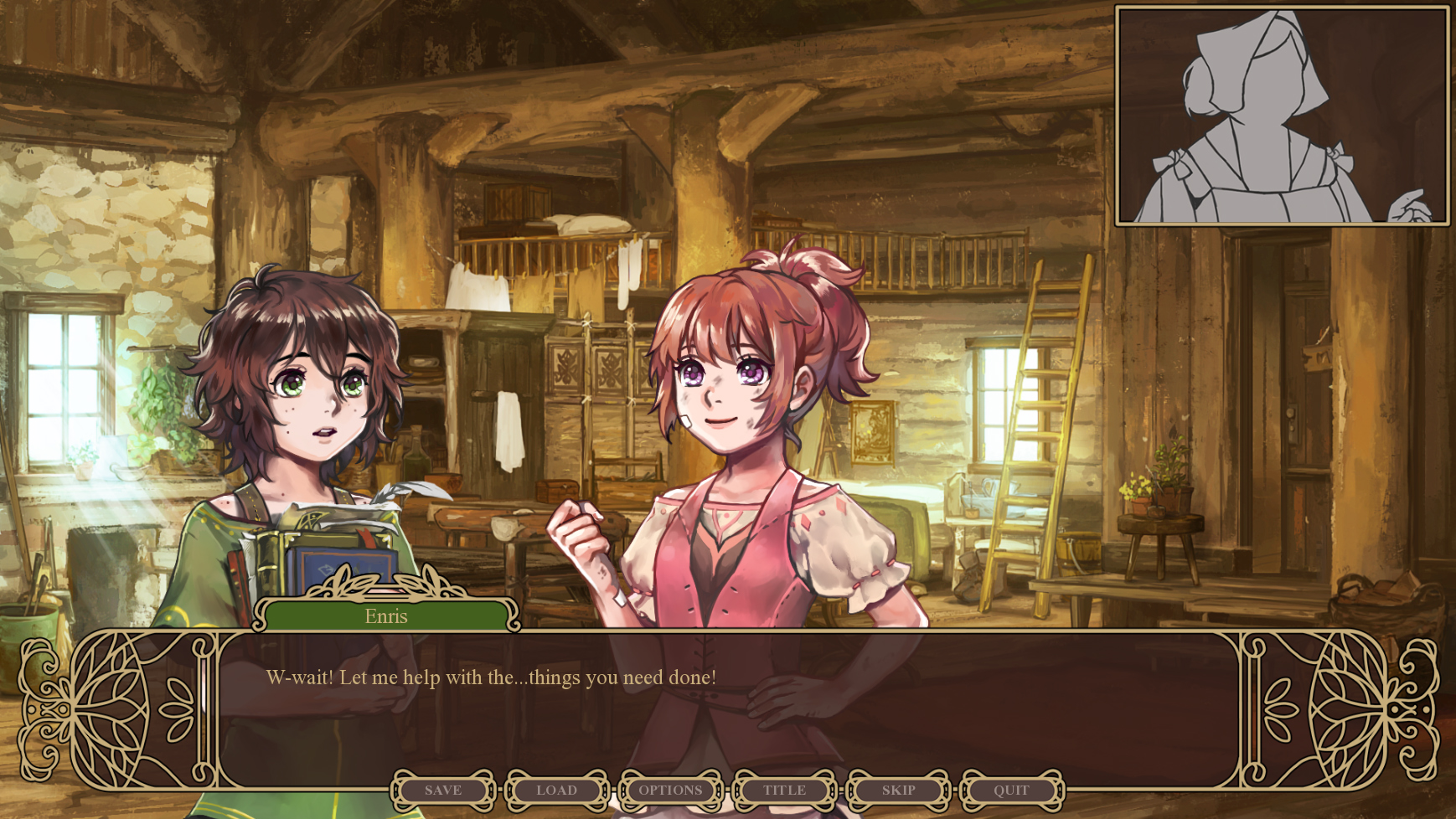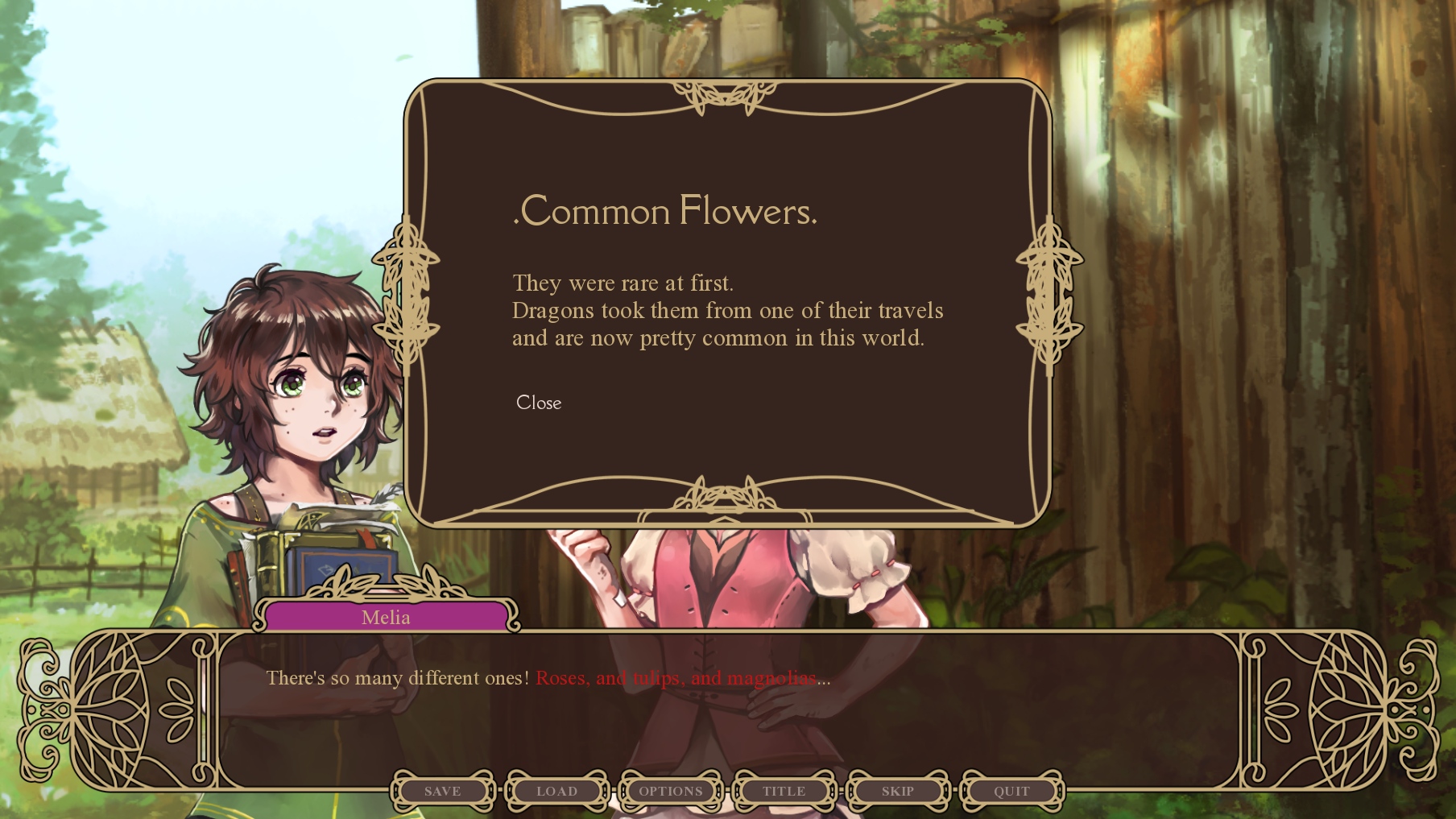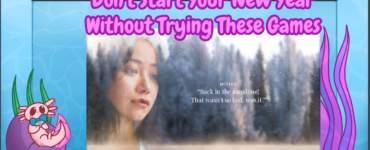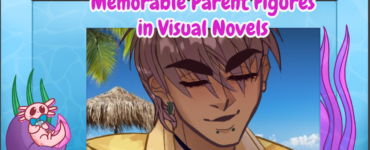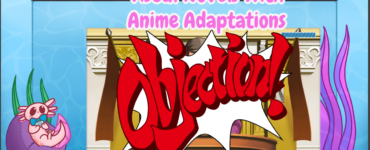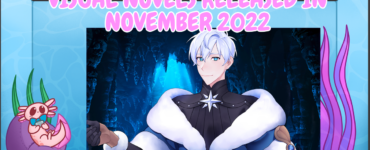Colors of Fate is a fantasy slice-of-life game in development by Karamelow. In the demo, follow Melia, an adventurous girl, through her childhood with her best friend Enris.
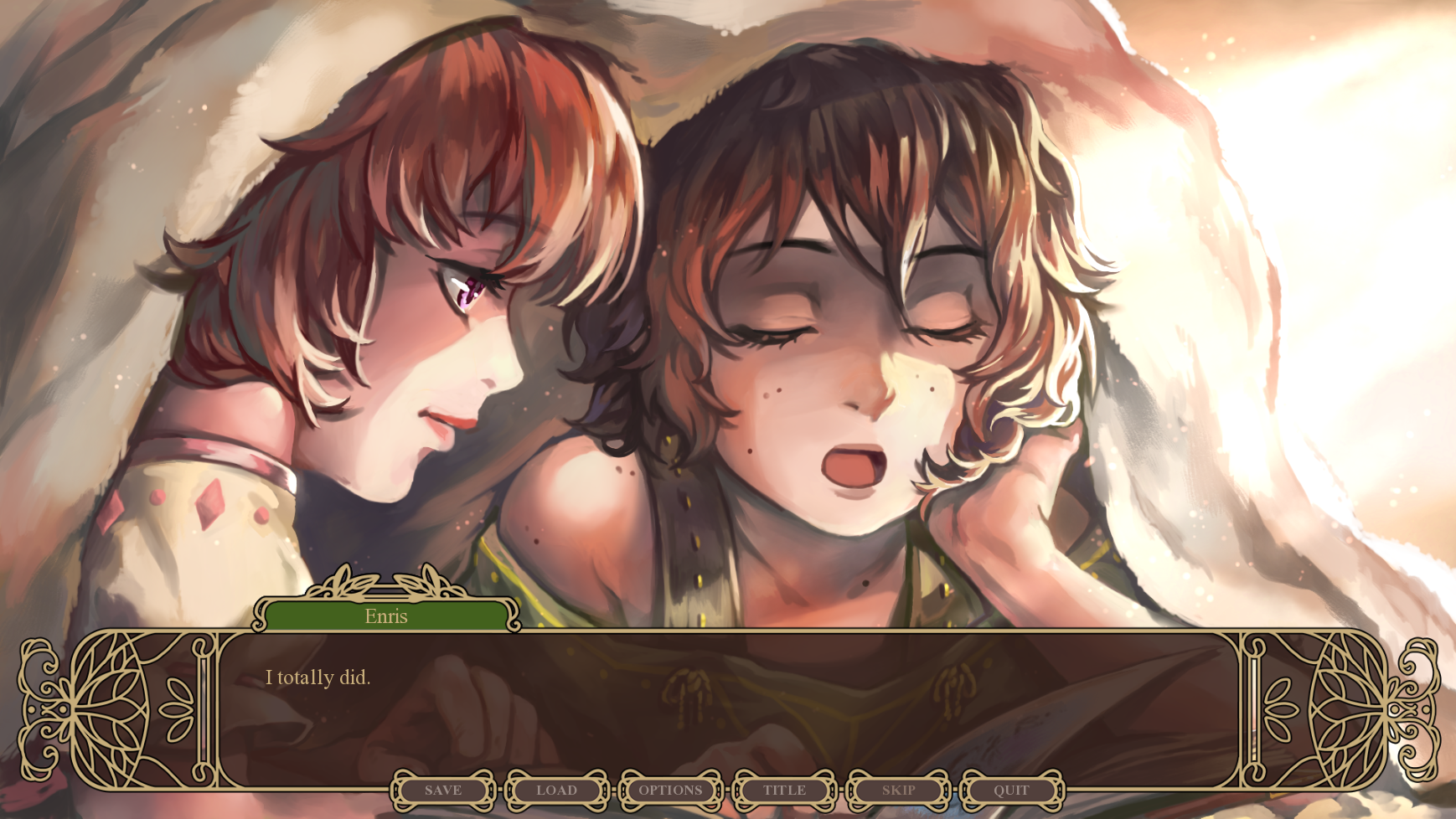
The Story
Colors of Fate is a lengthy demo that can take up to a few hours to complete depending on your reading speed. This gives us a great idea of the kind of game you’re going to be getting in the full version.
We follow the story of Melia, a stubborn yet boisterous girl, who lives in a small village in the center of a forest. Throughout most of the demo, Melia is with her best friend Enris, who is a stark contrast to the protagonist. He’s more mild mannered and seems to always keep Melia in check.
As the game progresses, we meet people from the village who provide more information about Melia and the town she lives in. But I do think the game can reach even further and give the player more insight into Melia’s relationship with the place she has called home for all of her life.
The writing in general is very well done. It remains true to the period the story is intended to take place in and creates vivid imagery beyond the game’s illustrations. At times, the language does come across as flowery and drags on a bit. I found myself clicking through some of the longer narrations to get to the action.
Aesthetics
Colors of Fate reminds me of a beautifully illustrated picture book. The game’s backgrounds and sprites are done in a painted style. The assets are vastly unlike those of a lot of the more popular visual novels we see on the market with sharp clean lines and a vibrant anime style. Given the game’s theme, medieval-styled fantasy, this all feels very fitting—especially considering that in the very beginning of the game, Melia and Enris share a moment together reading a book about a powerful knight.
Tying together the experience is the soothing ambient music, which helps make the player feel completely immersed into a scene.
Gameplay
Colors of Fate may only be a demo, but it does showcase an interesting mechanic that determines who Melia becomes as she gets older. As you make dialogue choices, a dialogue prompt will appear on screen to tell you if you’ve gained “Maid” or “Princess” points. To my understanding, when Melia is older, she can either become a maid or a princess and the player’s input directly determines this.
There is also a nifty lexicon feature. When Melia or another character mentions something that has some lore attached to it, the word or phrase will show up in red text. You can click these words to be brought to a small snippet of how the idea relates to the story. This is a clever and interactive way of sharing the world’s lore.
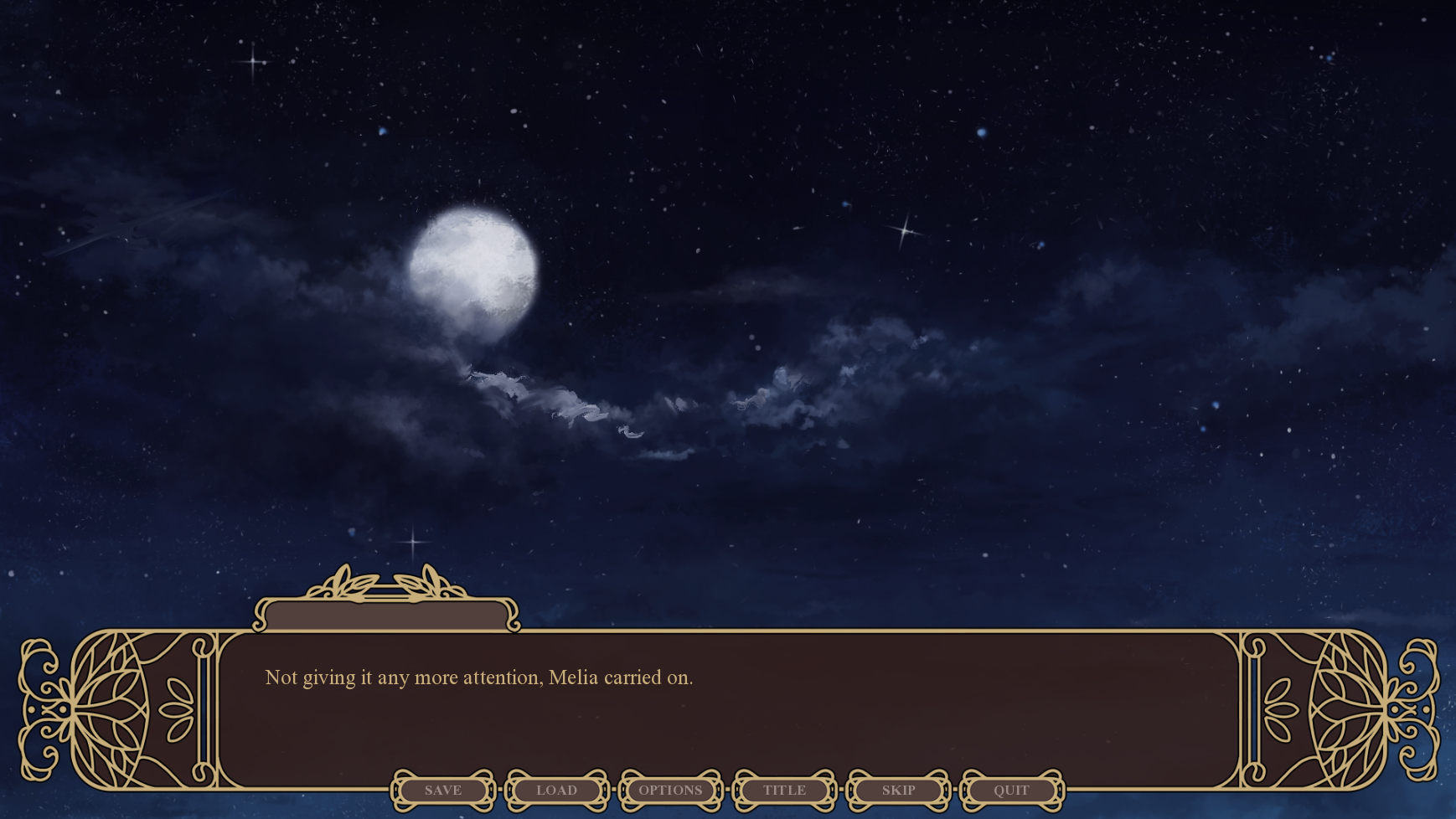
Overall
Colors of Fate is a beautifully done game. The story quickly transforms from an innocent child’s tale to something much heavier, with enough twists, turns, and emotional scenes to keep players engaged. But if that’s not enough to convince you, perhaps you’ll be enchanted by the game’s art style.
You can get the demo of Colors of Fate for free on itch.io.

